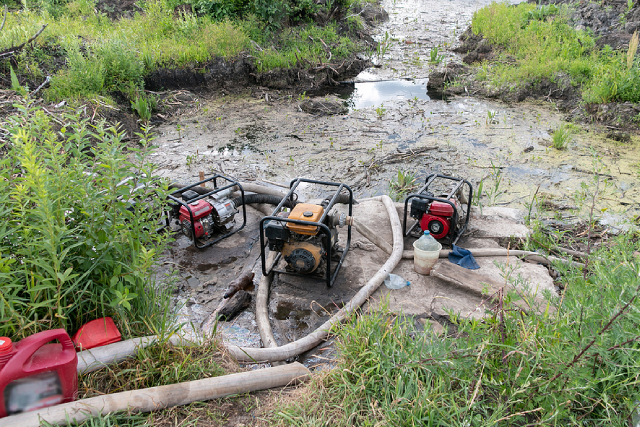A Complete Guide On How To Choose A Water Pump For Your Needs

Water pumps are invaluable tools for moving water efficiently, whether for household use, gardening, construction, or managing water in industrial settings. Selecting the right water pump for your specific needs is essential to ensure optimal performance and efficiency.
In this comprehensive guide, we will explore the key factors to consider when choosing the right water pump for the job.
Understanding your needs
Before diving into the specifics of water transfer pumps, it is crucial to understand your requirements and the environment in which the pump will be operating. Here are some fundamental questions to ask:
Power source: Do you have access to electricity, or do you need a petrol or diesel-powered pump? The choice of power source depends on your location and mobility requirements.
Indoor or Outdoor Use: Will the pump be used indoors or outdoors? Different pumps come with features tailored to different environments.
Type of Water: Is the water you're dealing with clean, or does it contain debris and solids? Clearwater and dirty water pumps serve different purposes.
Application: What is the specific task you need the pump for? Water pumps are versatile and can be used for various purposes, including irrigation, drainage, and circulation.
Inlet and Outlet Size
One of the first considerations when choosing a water pump is the size of its inlet and outlet. These sizes directly impact the pump's flow rate, determining how quickly it can move water. Generally, water transfer pumps come in a range of sizes, and your choice depends on the application:
- A lightweight pump with a smaller inlet and outlet size is suitable for home and garden use.
- Larger pumps with bigger inlet and outlet sizes are better for high-volume tasks, such as emptying dams or addressing site flooding.
Remember that a pump's flow rate is directly related to the size of its suction and discharge ports. A 4-inch port will move water four times faster than a 1-inch port. Therefore, matching the pump's size to your needs is crucial for efficiency.
Flow Rate and Maximum Head
Flow rate, measured in litres per minute (LPM) or litres per hour (LPH), is a critical factor in choosing the right water pump. Your task's size and urgency will determine the necessary flow rate. A small domestic job may require 100-200 LPM, while larger commercial tasks might demand significantly more.
Additionally, consider the pump's maximum head capacity, which refers to the maximum height or distance it can pump water to. If you need to draw water up from a source and then move it uphill, the pump's maximum head should exceed the total height or distance you need to cover. Be mindful that the flow rate may decrease as the distance increases, so select a pump with a head capacity that comfortably meets your requirements.
Engine Type
The type of engine powering your water pump is another critical factor. You can choose between electric, petrol, or diesel engines based on your specific needs and circumstances:
Electric: Electric pumps are suitable for indoor and smaller-scale applications. They are generally less powerful and require less maintenance than their gasoline or diesel counterparts.
Petrol: Petrol-powered pumps are versatile and cost-effective. They are commonly used on large properties, in farming, construction, and mining due to their mobility and reliability.
Diesel: Diesel engines are known for their fuel efficiency and durability. They are often preferred for demanding industrial applications and offer longer operating times.
Design Features
The environment in which you will use the water pump can significantly impact your choice. Commercial-grade pumps often come with special features designed for use in rugged conditions. Some features to look for include:
Rollover Casing: Protects the pump from damage if it's knocked over.
Anti-Vibration Dampening: Keeps the pump in place and reduces noise during operation.
Low Oil Shutoff: Automatically stops the engine if oil levels are low to prevent damage.
Portability: If you need to move the pump frequently, opt for a lightweight, portable design with handles for easy transport.
Conclusion
Much like electric diaphragm pumps, selecting the right water pump for your needs requires careful consideration of factors such as power source, inlet/outlet size, flow rate, maximum head, engine type, and design features. By understanding your requirements and the environment in which the pump will operate, you can make an informed choice that ensures efficient water transfer and reliable performance.
Remember that choosing the right water pump is essential for the success of your project, whether it's keeping your garden green, managing site drainage, or handling industrial water transfer needs. With the right knowledge and careful consideration, you can confidently select the perfect water pump for the job at hand.

